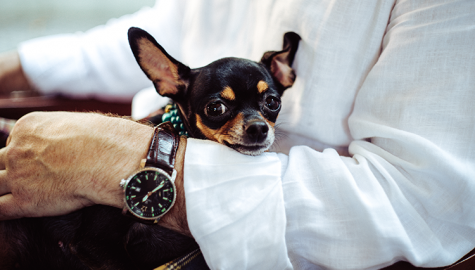Flea and tick bites on your dog must not be treated lightly as it causes a host of diseases if left unattended. The diseases following the bites are transmitted when these parasites feed on the blood of your pet.
Different species of fleas and ticks are propagators of certain viruses, bacteria or protozoal parasites. These particular infections are mostly host or carrier specific.
The following are the diseases that are caused by fleas and ticks:
- Parasitic Dermatitis – Parasitic dermatitis is an allergic reaction caused as a result of hypersensitivity to certain substances in the flea’s saliva. You will notice the presence of itchy and inflamed skin on the areas that are afflicted with fleas. Over a period of time the constant irritation will cause hair loss and infection in your pet.
- Lyme Disease – Bacteria that is transmitted following a tick bite leads to Lyme disease. It is a very common tick related disease. Signs of the disease include sudden lameness along with fever, anorexia and lethargy. To prevent the onset of this disease vets recommend Lyme vaccinations for all dogs.
- Bartonella – They are bacterial parasites that are transmitted through flea and tick bites. Bartonella can affect dogs, cats, rodents and humans. It invades the red blood cells and protects itself using the cell membrane while multiplying. It can cause a multitude of ailments depending on the type of strain seen in the host. It is detected through blood tests and is treated by giving a course of antibiotics.
- Erlichiosis – Erlichiosis is a bacterial infection that is caused following tick bites. This bacteria infects and destroys the white blood cells in the body of its host. Its symptoms often lead to lethargy, weight loss, anaemia and enlarged lymph nodes and spleen. It is detected through blood tests and is treated by giving a course of antibiotics.
- Rickettsiae – Rickettsiae is a bacteria that is transmitted through flea and tick bites. The ailments caused by rickettsiae are typhus, Rocky Mountain spotted fever, flea-borne spotted fever and tick fever. Its diagnosis and treatment depends on the strain of rickettsiae and its associated illness.
- Meningoencephalitis – Meningoencephalitis is an inflammatory disease caused by tick-borne viruses. This disease affects the brain and spinal cord and the surrounding membranes. The onset of this disease leads to poor nervous system function. The symptoms of the disease include fever, pain, convulsions and paralysis. Diagnosis is usually done through cerebrospinal fluid analysis. Its treatment is usually done successfully with antibiotics and anticonvulsants provided that the meningoencephalitis is a result of a tick-borne virus.
- Tapeworms – Tapeworms are parasites that are transmitted when fleas are ingested while grooming. Tapeworms survive in the digestive tract of the host and produce reproductive segments of the body known as proglottids. These are passed in the host’s faeces and is easily noticeable. This serves as the only indicator of a tapeworm infestation.
Prevention of any disease is always cheaper and better than cure. So, better get your pet vaccinated against such illnesses. There are however very few vaccinations that protect your pet from these diseases. So, the only way to cure any flea or tick related illness is to get rid of the main parasite itself. Your vet will be able to help you figure out the solution.















